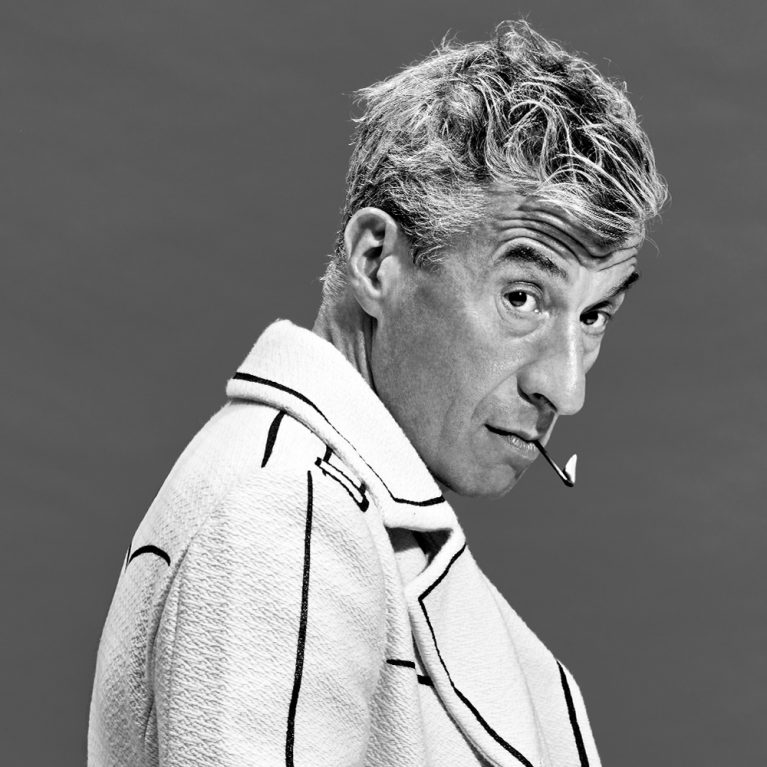interviews
Maurizio Cattelan’s Milan
My relationship with Milan started when it became clear that no other city in Italy could offer me what was in Milan...

What are the origins of your relationship with Milan?
My relationship with Milan started when it became clear that no other city in Italy could offer me what was in Milan. I don’t think it would be any different today. After all, it is the city in Italy where I’ve chosen to carry on living. A special place for me is certainly the Monumental Cemetery [Rising City]. Not only is it incredibly calm and peaceful, but it’s also full of artworks, from Medardo Rosso to Lucio Fontana. The whole history of Milan’s most outstanding figures passes through there. It’s a kind of open-air museum, but without the curators, collectors or gallerists. Just the dead.
What is your favourite historical building in the city?
I really appreciate Milan’s strong traces of rationalist architecture, a movement which gained considerable space during the years of Fascism. It’s fascinating how certain historical periods – which in many ways produced little worth remembering, particularly due to their lack of freedom of expression – have nonetheless managed to leave a prominent mark from the perspective of urbanistic and architectural history. Examples in Milan include the Città Studi university and polytechnic district, the Parco Sempione [Monumental Milan] area, Palazzo dell’Arengario in Piazza Duomo, and so on.
This has always struck me as a curious contradiction in terms.
What do you normally do when you are in Milan?
The route I take every day goes from Viale Regina Giovanna to Viale Tunisia and the Cozzi swimming pool [Mineral City]. Then there’s the return journey: Cozzi swimming pool, Viale Tunisia, Viale Regina Giovanna. I know every pothole along the way, and every spot where your bicycle wheels can safely cross the tram tracks without getting stuck. It’s become a mantra nowadays, a sort of meditation exercise, just like the lengths of the pool that I swim when I reach my destination.
Is there a shop in Milan where you buy special items?
I don’t think it’s easy to talk about special stores selling special articles, because I suspect that uniqueness is becoming an outdated concept these days.
Today, shops that have been successful, such as the Princi bakery, have taken a step up the ladder and opened their businesses overseas, too. It’s a very positive thing to be able to export certain excellent local products and successfully turn them into a business in another country.
What is your favourite cafe, bar or restaurant in the city?
Naming my favourite Milanese restaurant gives me a sense of reluctant nostalgia, because I recently found Il Carpaccio eatery with its shutters rolled down. I’m in mourning. It was my moment of normality. I felt truly at home there, as if it were the kitchen of my own house. In a way it’s a good thing, as now I’ll have to put my culinary skills to the test. But it also means that I have to risk my life over the gas ring every day!
Which new buildings have transformed the face of Milan?
The face of the city has been emphatically changed by all of the Porta Nuova complex [The rising City]. It has concentrated Milan’s economic side into one area, and it has changed its distinguishing features like a face-lift, or a boxing match, depending on your point of view. Usually I don’t agree with the Northern League people, even though I’m from Veneto, but I’ve always thought that Va’, pensiero from Verdi’s Nabucco would be a more suitable national anthem than a military march. It would be more representative of us and our times. The same goes for our cities: sometimes you only have to freshen up the panorama to perceive an improvement. If I can add a negative aspect, it must be said that the changing city unfortunately no longer belongs to us. Instead of worrying about migrants arriving by sea, we should watch out for those arriving via investment funds and dividing our cities into lots.
What would you transfer to Milan from another place?
Naples.


